Motorsports
Why the Indy 500 is “fascinating puzzle” according to ex-F1 engineer David Brown
The 33 cars that will participate in the Greatest Spectacle in Racing on Sunday have already undergone countless hours of work in shops and at the Indianapolis Motor Speedway in an attempt to become the next Indy 500 champion. But what does a technical director look for when setting up a car to perform at […]

The 33 cars that will participate in the Greatest Spectacle in Racing on Sunday have already undergone countless hours of work in shops and at the Indianapolis Motor Speedway in an attempt to become the next Indy 500 champion. But what does a technical director look for when setting up a car to perform at its best on this unique 2.5-mile oval track?
Motorsport.com sat down with David Brown, who joined Juncos Hollinger Racing last December, to understand how an IndyCar organization navigates the Month of May and the forces involved in taming a car that goes almost 240 mph. Racing for Juncos are Conor Daly and Sting Ray Robb.
Brown has decades of motorsport experience. He spent nearly 15 years in Formula 1 with Williams, where he engineered Nigel Mansell’s and Alain Prost’s World Championship seasons, and worked also with McLaren and Jordan.
Yet, he is fascinated by the Indianapolis 500. “The more you get involved, the more you understand why people become obsessed with the Indy 500,” Brown says.

David Brown, Juncos Hollinger Racing
Photo by: Juncos Hollinger Racing
From a technical standpoint, what does the car need to be fast in the Indianapolis 500?
“It’s a juggle between drag, balance and efficiency. So it’s easy to watch the race from the outside and think it’s just about running minimum wing and minimum drag. But the problem is that you can’t, because you will be too slow in the corners. Even though the cars still look fast in the corners, if you lift and you lose momentum, and you have to keep the revs up. So all these little tiny things join together to give you the [car’s] overall performance. So you’re looking for low drag, but you need downforce, which means you also need efficiency, which is a combination of the two. You need high power, which is good because we have a Chevy engine, which is very good engine.
“But also you need to get that power onto the road, which means you need to be very efficient in your transmission. So it’s another combined factor. You also need to be able to stay full throttle, which is the downforce side of it. So you’re maximising the output of your engine and your transmission.
“And then in traffic, you need to be able to respond with the correct gear ratio selection. So everybody runs fourth, fifth and sixth gear very, very close together. So you can do laps with a tow, for example, at sixth gear. But when you’re in traffic, you might need to be fourth gear, and a very small gap, so you’re almost imperceptible. You see the driver’s hand move and the engine note changes just a little, because you’ve made a 70 rpm rev change to the engine by changing gear.
“So all these tiny things come into focus then, and that’s just producing the lap time. I mean, you’ve got pit stops, which are absolutely vital. You have a car which has got the wheels like this for rubbing on the oval, braking at maximum deceleration into the pit lane, even though the outside of the tyre is completely cold and blah, blah, blah, blah. And the car’s got a weight jacker, which is the cross weight is all on one side of the car. So when you come to stop the car in the pit lane, you often see people locking wheels and stuff.
“The idea is that, you know, you can’t make mistakes by having the wrong brake bias and the wrong weight jacker position when you come into the pit lane, because otherwise you risk, apart from the fact that you will slide all over the place and scare all the people in the first pits, you risk crashing the car coming into the pit lane and ruining your race. So there are so many little details. It’s a fascinating puzzle to put together.

Conor Daly, Juncos Hollinger Racing
Photo by: Action Sports Photography
It’s clear you’re passionate about it. Of course, you have a lot of experience with other forms of motorsports, especially Formula 1. How would you compare the Indy 500 to everything else you’ve done in your career?
“It’s very individual. It’s very unusual. I mean, I’ve done Le Mans and Monaco and Daytona and everything in between, you know, all the sort of long races and 20 years of Formula 1 and stuff. And it’s just… it’s like looking at a face through a screen, right, you know, it’s there and you sort of recognize it, but nothing is exactly the same. And so you have to adjust your perception when you get involved in it.
“And I did get involved in this race 20 odd years ago, but only on the sort of periphery. But it’s been a lot of learning for me. But it’s fascinating. I often talk about race engineering and engineering and racing cars. You know, these people who spin plates on a stick? You see the guy running around. He has 20 of these things going. He’s running. It’s just like that. That’s exactly what you’re doing. So you have to make sure that all the plates are still spinning.”
Having all these days of practice means there’s a lot of data to analyze. How does Juncos Racing process all of that?
“Well, it’s interesting you should say that, because on paper, yes, we’ve got lots of time. But in fact, we are always running as long as we possibly can in every session because of the challenges of qualifying and the importance of qualifying, and the fact that the configuration of the car is so different for qualifying.
“We have really two separate areas. We have the race preparation and the qualifying preparation. And the car, of course, is a similar car, but its final aero configuration and so on is quite different for qualifying — and the power. We get extra boost. Everybody gets extra boost for qualifying and all that sort of stuff. So we arrive here having done lots of simulation.
”We did the Open Test, which is two days. So we arrived here with some idea of what challenges we were going to face. And we have a list of just like with any other challenge in life, you have a list of things that you want to try and you want answers to. And we start off with the most important ones and we work towards the least important ones.
“Of course, it’s never as linear and as obvious and as straightforward as you would hope. So always extra things comes up. You either learn something that sets you off in a slightly different direction to your advantage or you learn something that isn’t working well and you have to go another route in order to compensate.
“And there is, as you say, a lot of data. We have three engineers directly working on each car. Plus two other senior engineers, myself and Will (Phillips), who’s the senior engineer on the other car. We get a lot of support from GM because we’re a GM engine team. So they have engineers as well who are looking at the data. So in running the two cars, we’ve probably got, including the GM people, probably 10 or 11 people looking at data, which is a lot. But we generate a lot of data. It’s huge.
How do you divide your time during practice between qualifying and the race?
“We ran Tuesday, Wednesday, Thursday. So I think we ran three days of practice, which was race practice. But we did also do some running on our own to try and practice a little bit of qualifying. So maybe a third of a day. And then the day before qualifying was just practising for qualifying. And then you have qualifying itself. Because we narrowly missed getting into the top 12 by 0.06 of a mile an hour, some tiny margin. And of course, everything is tiny margins because it’s IndyCar and it’s Indianapolis. So we didn’t have to run on Sunday. But today (May 19th) we’ve got two hours of practice and then we have carb day on Friday, that’s another couple of hours, and that’s it, that’s the race. It doesn’t take long to whip through all that time.
“Even though it’s such a short lap, the conditions are constantly changing. So not only the atmospheric conditions, because, you know, of the wind and the temperature and the ambient pressure and humidity and stuff, all of which makes a difference. If the wind changes and we have to change the downforce level, if the temperature changes, we have to change the wing settings to compensate for the temperature.
“By the time you covered all that stuff, you really are running all the time. I mean, today we want to do long runs, some 30 lap runs, just like the race to look at the tyres and look at the performance and look at the handling as over the length of it as the fuel load comes down and the tyres degrade, for example. But Carb Day is it’s pretty late to make big changes by the time you get to Carb Day really. You’re just sort of checking everything, making sure, just doing the tiny little sort of polishing, if you like, of the performance. But today is quite an important day. It’s only two hours and it’s going to go ‘boom!’.
How does a car’s setup differ between qualifying and racing?
“For us, it’s mainly been aero. I mean, some people have made some more mechanical changes, but if you have a car which you really like from a mechanical point of view. And so a good car mechanically, is a car which you can run a range of aero balances on an aero components and it’s still the same. So we think our car is comfortable for the drivers. So we made mainly aero changes, but very few mechanical changes.”

Sting Ray Robb, Juncos Hollinger Racing
Photo by: Penske Entertainment
How easy is it to fall off the window with the setup by making a slight change?
“Very easy. Yeah. I mean, every time we make a change, we measure how the car is before we make the change and then measure afterwards, which means literally if we change the front wing angle in the pit lane, we measure the front wing angle in the pit lane, even though we’ve done it half an hour before. We measure it and we change it, we measure it again. So we’re dealing with, what did we make the other day? We made a wing angle change of 0.15 of a degree. Complete madness, 0.15 degrees like this, but because it makes such a huge difference because at 230 miles an hour, the forces are enormous. And if you’ve got an imbalance, everything is magnified.”
It’s funny that you mentioned that because I heard Conor Daily say that he didn’t feel right with the car during the Open Test. He said that he wasn’t comfortable, and you changed the front wing. Despite the fact that it was supposed to be the same front wing, it kind of changed the whole balance of the car. That’s how tricky and small the margins are.
“Yes, we ended up actually having to select by running them on the car to check all the wings because the circumstances it’s not really very easy to model because the expectation is every wing is the same. But in fact, every wing is different. And so we have some tests which we do on the wings statically to measure how stiff they are and how robust they are. So we measure vertically and in torsion and all those things like everybody else does. And we do some other tests as well. And when we select the wings from our stock, which we have a primary wing and a secondary wing for each car, and then we run them on the track just to be sure, because as you say, if if it’s slightly imbalanced, then it’s over. You know, it’s going to be a very, very long day.”
Which tool is the most important for adjusting the car setup in the Indy 500? Can you pick just one, or is that not possible?
“Well, the nice thing and the fascinating thing is the racing car is like those models of chemicals, those balls with balls and everything is connected. So every time you make a change to one part of the setup, then something else is going to move as well. And it’s just because it’s a racing car. That’s the way racing cars are, which makes it interesting, but it makes it difficult to define which is going to predominate. It would be obvious to say, ‘oh, the aero is very important’. Yeah, it is. But so the mechanical side, because that controls the ride heights and the ride heights define the aero. So is everything is connected. And so you can use the mechanical side to change the aero properties of the car, for example. So they’re tied together. The obvious thing is we change the wings a lot, but we also change the suspension as well. You know, some people run different wheelbases depending on whether they’re racing and qualifying. Quite big changes, but we didn’t because we quite like our car like it is. So we just changed some fewer components.”
Juncos has had fast cars at the Indy 500 for the last couple of years, but they’ve had inexperienced drivers for this specific event. How much did Conor’s IMS experience change the car?
“I think that one of the things that Conor brings because of his experience, he’ll drive the car, he’ll come in and say, ‘this is how I want the car to feel or this is not how I want the car to feel. It’s OK for one lap, but if I get into traffic, it does this and it moves too much’. He will make comments like, ‘Yes, I know what it feels like now. And my experience tells me that in the race, it’s going to feel like X, which is either good or bad.’ And that brings a huge plus to us, a huge advantage.”
You have the hybrid unit for the first time this year for the Indy 500. Was it difficult to learn how to use it?
“Yes, I think we, along with most people, have worked with it enough now to know what we want to do with it in the race. You saw in different strategies in qualifying, it’s not going to be like that in the race because you will use the hybrid in a completely different way because it’s a totally different environment in the race. But most people have been using it long enough to have experience of how to use it properly. So, yeah, it’s just another piece to add into the puzzle, if you like.”
Do you think it could be a deciding factor in the race?
“Well, I’m sure if you get it wrong. The thing is that everybody has it, right? So it’s like making the engines bigger. Everybody will just go faster. But you can get it wrong. And so if somebody gets it wrong or, you know, the driver doesn’t press the button at the right time, that will become an influence. But if everybody does everything perfectly, nothing will change. But of course, that applies to everything, pit stops, etc.”
In this article
Federico Faturos
IndyCar
Juncos Hollinger Racing
Be the first to know and subscribe for real-time news email updates on these topics
Motorsports
Porsche young drivers take on Spa 24 Hours
Photo credit: Porsche Porsche Motorsport North America’s Selected Drivers series continues its global push this weekend as Laurens Hartog and Tom Sargent prepare to compete in the 24 Hours of Spa. Both drivers will pilot Porsche 911 GT3 R entries at Circuit de Spa-Francorchamps, with the race scheduled to start at 12:30 p.m. EDT on […]

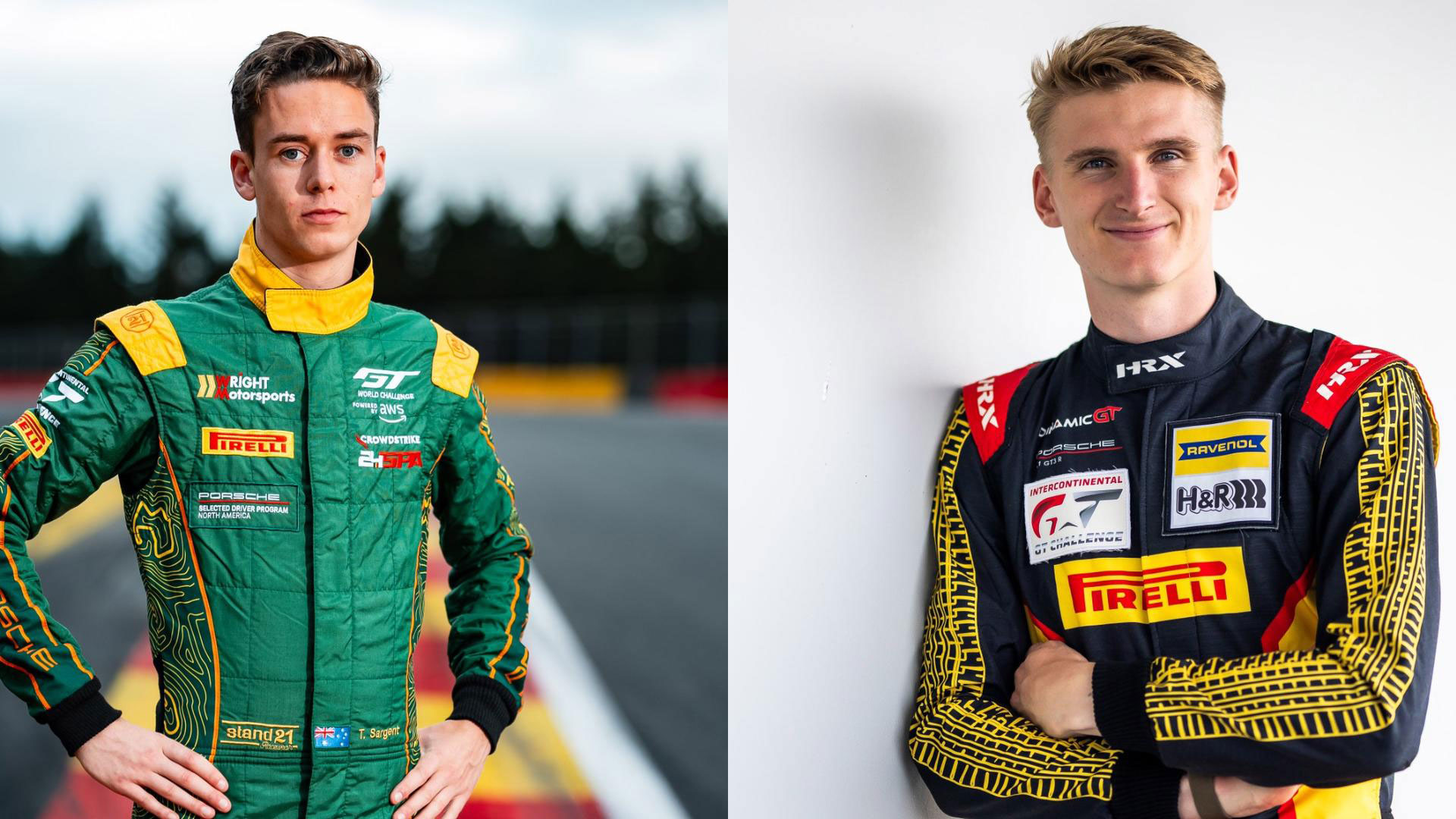
Photo credit: Porsche
Porsche Motorsport North America’s Selected Drivers series continues its global push this weekend as Laurens Hartog and Tom Sargent prepare to compete in the 24 Hours of Spa. Both drivers will pilot Porsche 911 GT3 R entries at Circuit de Spa-Francorchamps, with the race scheduled to start at 12:30 p.m. EDT on Saturday, June 28.
Hartog arrives fresh from a podium finish at the Nürburgring 24 Hours, while Sargent is making his Spa debut after racing at the Six Hours of Watkins Glen earlier this month. Hartog has twice won endurance events at Spa, including the Porsche 992 Endurance Cup 12-Hour and a 24-Hour Series race. Sargent earned a Porsche Carrera Cup North America championship runner-up spot in 2023 and captured a GT World Challenge victory with GMG Racing in 2024.
Both drivers were named to the PMNA Selected Drivers roster alongside Riley Dickinson in recognition of their success in Carrera Cup North America. Hartog is the defending series champion, and Sargent finished directly behind Dickinson in 2023. The Selected Drivers program provides manufacturer support, expanded race opportunities and mentorship across GT and endurance platforms.
Volker Holzmeyer, president and CEO of Porsche Motorsport North America, praised the group’s international impact and wished them luck at what is billed as the world’s largest GT3-only event. In addition to Hartog’s Dinamic GT entry and Sargent’s Wright Motorsports lineup, a total of 75 GT3 cars from 10 manufacturers will contest the race across five driver-ranking classes.
Motorsports
Dale Earnhardt Jr. trolls Hendrick Motorsports after NASCAR levied suspension
Feeling fresh off his first win as a crew chief in his first race on the box, Dale Earnhardt Jr. trolled his Hendrick Motorsports friends. Dale Jr. helped lead Connor Zilisch to the win at Pocono. It was the young NASCAR driver’s first win at an “oval” track. There was a bit of criticism, or […]
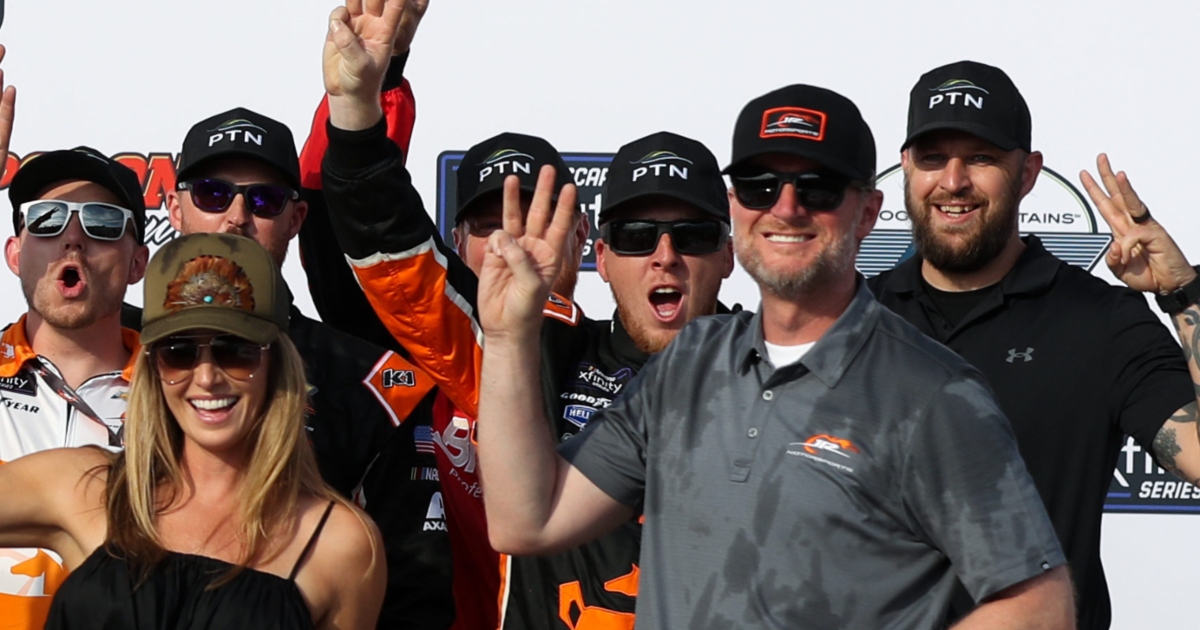
Feeling fresh off his first win as a crew chief in his first race on the box, Dale Earnhardt Jr. trolled his Hendrick Motorsports friends. Dale Jr. helped lead Connor Zilisch to the win at Pocono. It was the young NASCAR driver’s first win at an “oval” track.
There was a bit of criticism, or more dismissal, over Dale Earnhardt Jr. and his first race as a crew chief. A few people were talking about “war rooms” and how connected the crew chiefs are to the tracks, even when they are suspended.
No matter the outside noise, Dale Jr. appears to want to do it again. Chase Elliott’s No. 17 car was taken back to the Research and Development Center for a teardown. Well, the Hendrick Xfinity Series team got caught with a “main frame rail conical receiver violation.”
Adam Wall was the crew chief, and he’s suspended for three races. So, Dale Earnhardt Jr. says he’s going to hit up Greg Ives and see if he can fill in for the 17 team.
Ives has been at Hendrick Motorsports for years, from mechanic to crew chief. In the Cup Series, he’s worked with Jeff Gordon, Dale Earnhardt Jr., and Alex Bowman. He recently worked as the crew chief for JR Motorsports and Justin Allgaier in the Daytona 500.
Could Dale Jr. convince his former crew chief to let him work on the 17 car? I’m not so sure. Ives is helping develop Corey Day in the Xfinity Series in that car. Maybe they need a guy to catch tires on pit stops. Earnhardt proved he can do both at Pocono.
Dale Earnhardt Jr. was thrilled to win as crew chief
With Mardy Lindley watching at home and helping as much as he could, Dale Earnhardt Jr. had a great debut as crew chief. He also had his buddy Steve Letarte up there with him. So, Connor Zilisch was in good hands.
I mean, there were many chances that Earnhardt could have ruined things. He was on the pit box; he ultimately had the final say on things. If he made one decision for whatever reason against Lindley or Letarte’s advice, it could have cost them the race. Heck, he was grabbing tires! So, he could have easily caused a pit road penalty.
Besides, it was great to see him after the race. That win meant a lot to Dale Jr. However it got done, it got done.
“Yeah, it sure was [fun],” Earnhardt said on The CW broadcast after the win. “When we have an issue like this with somebody being suspended, and uh, Mardy and everybody, they know what to do. Just a great job, putting us in a position to succeed. And we had a lot of things go our way.
“A lot of good luck. Great strategy. Had a little help from Letarte up here. I wasn’t not gonna have Steve Letarte not get on this pit box after the races we won together in 2014. So, he was a big help. But Pat, everybody on this team, just amazing all weekend long. And what a great race car driver. Connor Zilisch is going to be a big deal in this sport for a long time. So, a lot of fun for me today!”
Motorsports
Rick Ware Racing agrees to sell to T.J. Puchyr, who wants to expand team
According to a report from the Associated Press, T.J. Puchyr has entered into an agreement to purchase Rick Ware Racing and expand it into a three-car team by 2027. Now, many fans are likely wondering who Puchyr is, but it is a name familiar to those in the NASCAR garage. He is a former owner […]
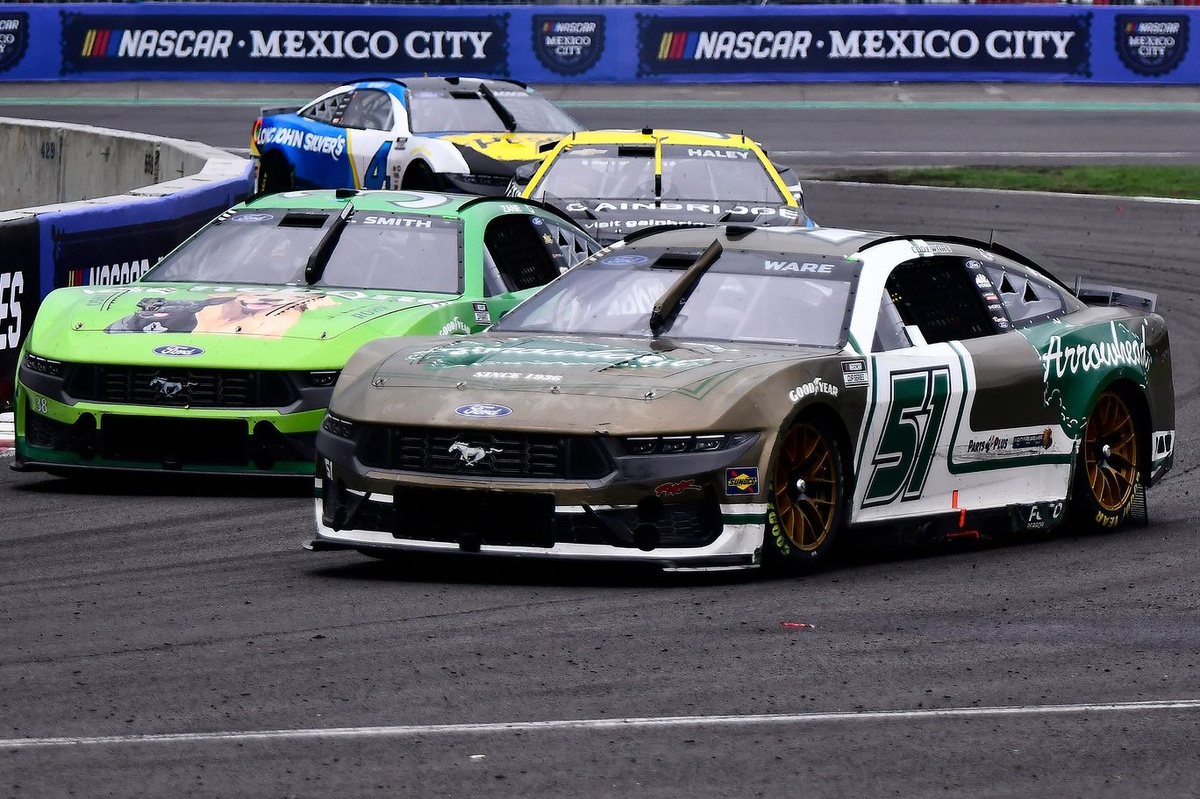
According to a report from the Associated Press, T.J. Puchyr has entered into an agreement to purchase Rick Ware Racing and expand it into a three-car team by 2027.
Now, many fans are likely wondering who Puchyr is, but it is a name familiar to those in the NASCAR garage. He is a former owner at Spire Motorsports alongside Jeff Dickerson, helping to build it into the strong organization it now is. They purchased Furniture Row Racing’s charter following the 2018 season and formed Spire together, which now runs three full-time entries and has contended for multiple race wins this year. Puchyr has since sold his stake in Spire and is no longer connected to the team.
Per the AP, the deal would keep Rick Ware’s son Cody as one of the drivers. RWR currently runs one full-time, charted car, but they are also leasing another charter to RFK Racing for the No. 60 Ford in a two-year agreement. RWR is also in the middle of a lawsuit with Legacy Motor Club, who claims RWR backed out of a signed deal and that they owe them a charter for the 2026 season.

Cody Ware, Rick Ware Racing Ford
Photo by: Jared C. Tilton/Getty Images
Rick Ware Racing’s No. 51 Ford Mustang is currently last in the championships standings among the 36 chartered teams, placing no higher than 24th in any race this year.
“I’ve won at everything I’ve done at every level, and I think we can compete with these guys,” said Puchyr in an interview with the Associated Press. “I think we can build it brick-by-brick and it’s going to take people, money and time. It’s not lost on me that [RWR] is the 36th-place car in the garage, we all see it. But I believe we can make this a competitive organization, even a winner.”
There are a lot of moving parts with this deal, and it will be fascinating to see how it unfolds in the months to follow.
In this article
Nick DeGroot
NASCAR Cup
Rick Ware Racing
Be the first to know and subscribe for real-time news email updates on these topics
Motorsports
Daniel Suárez Faces Trackhouse Future Turmoil After JGR Breakup and Sponsorship Betrayal
In a year marked by turmoil and uncertainty, NASCAR driver Daniel Suárez found himself at the center of a storm of betrayal and upheaval. The shocking details of his breakup with Joe Gibbs Racing (JGR) after Toyota and sponsors turned their backs on him have now come to light, revealing a tale of resilience and […]
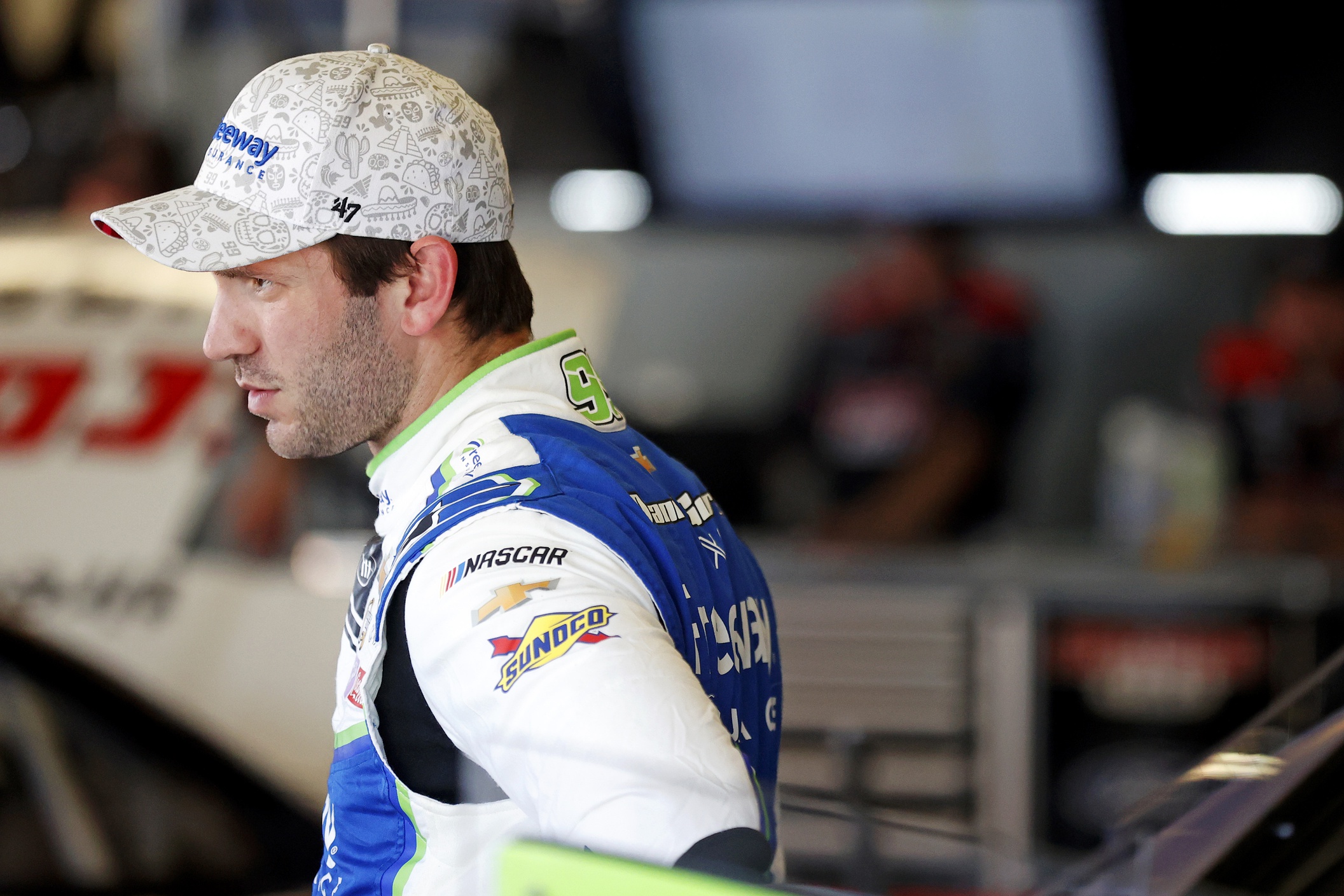
In a year marked by turmoil and uncertainty, NASCAR driver Daniel Suárez found himself at the center of a storm of betrayal and upheaval. The shocking details of his breakup with Joe Gibbs Racing (JGR) after Toyota and sponsors turned their backs on him have now come to light, revealing a tale of resilience and determination in the face of adversity.
As the COVID-19 pandemic wreaked havoc across various industries, NASCAR was not spared from its effects. The 2020 season came to an abrupt halt, leaving teams scrambling to navigate the new normal of racing under strict protocols and financial strain. For Suárez, who had spent over four years at JGR, the sudden policy shifts and departures of key personnel created a sense of instability within the team. The Mexican driver admitted that it never felt like he was part of a winning environment, with crew chiefs and engineers constantly in flux.
The pandemic-induced sponsor cuts further exacerbated Suárez’s challenges, leading him to make multiple moves between teams, from Gibbs to Stewart-Haas, and eventually to Trackhouse Racing. Each transition tested his mettle and reinforced his focus on the ultimate prize. Suárez’s experience underscored the crucial role of trust in the world of NASCAR, where loyalty can quickly dissipate in the face of financial turmoil.
Speaking candidly on the Dale Jr. Dirty Mo podcast, Suárez revealed the harsh reality of dwindling sponsorships in the wake of the pandemic. What was once a promising partnership with Toyota and JGR crumbled as sponsor commitments evaporated, leaving the driver with limited resources to compete at the highest level. The financial strain was felt industry-wide, with NASCAR teams grappling with a significant drop in sponsorship revenue.
Despite the setbacks, Suárez approached each new opportunity with unwavering determination. His brief stint with Gaunt Brothers may not have yielded the desired results, but it showcased his relentless drive to succeed against all odds. Now, at Trackhouse Racing, Suárez faces another crossroads as his contract nears its end. With one win under his belt and a precarious position in the standings, the pressure is on for the Mexican driver to deliver results and secure his future in the sport.
As Suárez navigates the uncertainties of his racing career, his positive attitude and commitment to success have not gone unnoticed. Even in the face of potential upheaval at Trackhouse, the driver remains focused on achieving both personal glory and team success. The coming months will test Suárez’s resilience once again, as he strives to turn the lessons learned from past betrayals into a pathway to sustained competitiveness on the track.
Motorsports
‘Truck & Tractor Pull’ to bring three nights of motorsports to Arcola
ARCOLA, Ind. (WPTA) – A truck & tractor pull is set to bring three nights of motorsports to western Allen County. From Thursday, June 26 to Saturday, June 28, the 2025 Arcola National Truck & Tractor Pull will be happening in Branning Park. The event held by the Arcola Volunteer Fire Department in partnership with […]
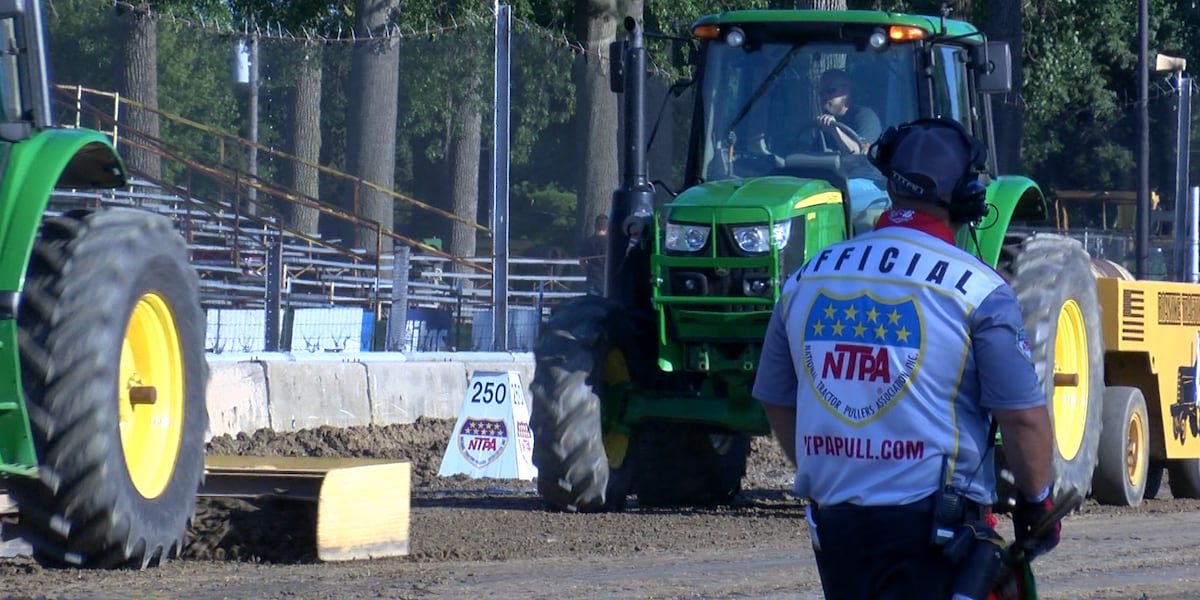
ARCOLA, Ind. (WPTA) – A truck & tractor pull is set to bring three nights of motorsports to western Allen County.
From Thursday, June 26 to Saturday, June 28, the 2025 Arcola National Truck & Tractor Pull will be happening in Branning Park.
The event held by the Arcola Volunteer Fire Department in partnership with the National Tractor Pullers Association invites competitors and fans to take part in three nights of motorsports.
Gates open at 5 p.m. nightly, with pulls beginning at 7 p.m. Each night will feature a variety of vehicle classes.
RELATED: Husband-wife duo compete in Arcola Truck and Tractor Pull
Tickets for the event are $14 on Thursday for people 13 and up, $18 on Friday and Saturday for people 13 and up, $5 for children between the ages of 6 and 11, and free for children under the age of 6.
Founded in 1954 as part of Arcola Days, organizers say the Arcola National Truck & Tractor serves as a key fundraiser for the Arcola Volunteer Fire Department.
To be the first to get the latest breaking news alerts, download the 21Alive News App here.
You can also catch the latest news from 21Alive anytime on Roku, Amazon Fire TV, and Apple TV. Just search “21Alive” in the app store and download the app to your device.
Copyright 2025 WPTA. All rights reserved.
Motorsports
Italian supercar set to debut at Monterey Motorsports Festival
The Monterey Motorsports Festival announced the U.S. debut of the Italian-made Perala S supercar during Car Week in August.The car will make its U.S. debut at Car Week. Under the hood, it has a 621 horsepower twin-turbo 3-liter V-6 engine. They say it was inspired by the Maserati Boomerang concept car from the 70s. Instead […]
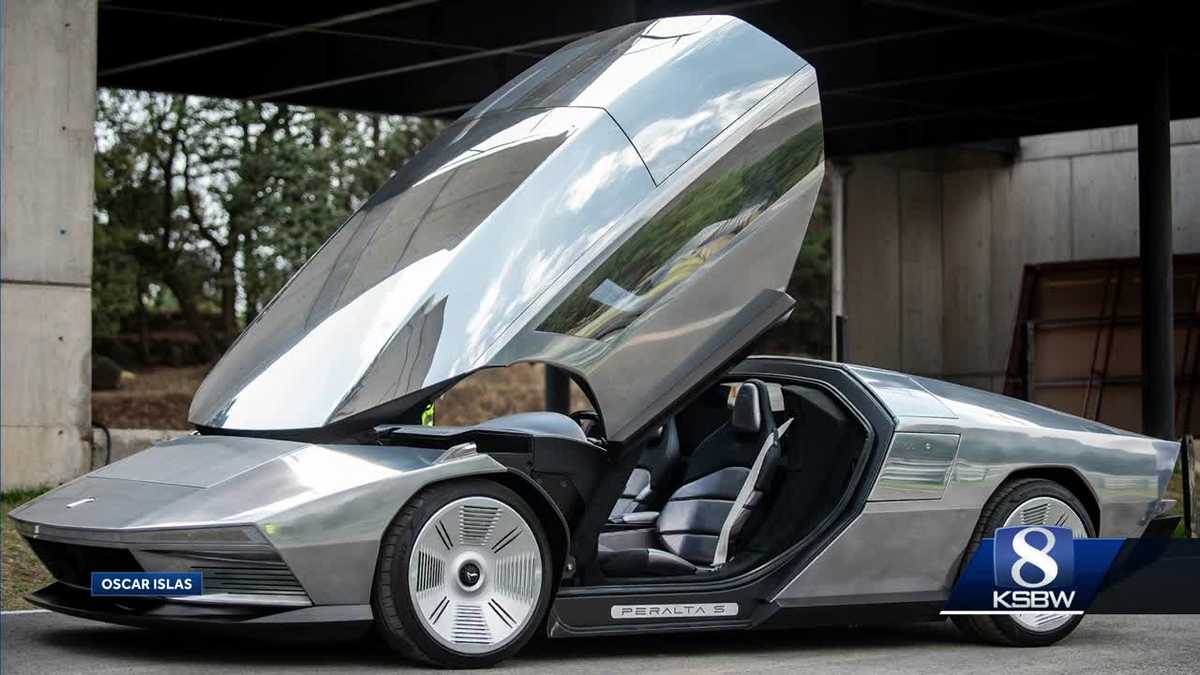
The Monterey Motorsports Festival announced the U.S. debut of the Italian-made Perala S supercar during Car Week in August.The car will make its U.S. debut at Car Week. Under the hood, it has a 621 horsepower twin-turbo 3-liter V-6 engine. They say it was inspired by the Maserati Boomerang concept car from the 70s. Instead of traditional doors, the entire front comes unhinged.If you want to get a glimpse of it in person, they plan to debut it at Car Week on August 16 at the Monterey Motorsports Festival. General admission tickets for adults run $119, with lower-priced options available for seniors and those under the age of 18.
The Monterey Motorsports Festival announced the U.S. debut of the Italian-made Perala S supercar during Car Week in August.
The car will make its U.S. debut at Car Week. Under the hood, it has a 621 horsepower twin-turbo 3-liter V-6 engine.
They say it was inspired by the Maserati Boomerang concept car from the 70s. Instead of traditional doors, the entire front comes unhinged.
If you want to get a glimpse of it in person, they plan to debut it at Car Week on August 16 at the Monterey Motorsports Festival.
General admission tickets for adults run $119, with lower-priced options available for seniors and those under the age of 18.
-

 Motorsports2 weeks ago
Motorsports2 weeks agoNASCAR Weekend Preview: Autódromo Hermanos Rodríguez
-

 Motorsports2 weeks ago
Motorsports2 weeks agoNASCAR Through the Gears: Denny Hamlin has gas, a border needs crossing, and yes, that’s a Hemi
-

 NIL3 weeks ago
NIL3 weeks agoShai Gilgeous
-

 Health3 weeks ago
Health3 weeks agoNew Era Begins As House Settlement Approved
-

 Motorsports2 weeks ago
Motorsports2 weeks agoNASCAR Race Today: Mexico City start times, schedule and how to watch live on TV
-
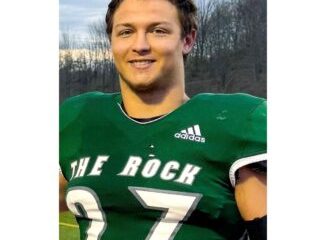
 Health3 weeks ago
Health3 weeks agoParents Create Fund in memory of son, raise awareness about suicide and mental health
-

 High School Sports2 weeks ago
High School Sports2 weeks agoHighlights of the Tony Awards
-

 Health2 weeks ago
Health2 weeks agoGymnast MyKayla Skinner Claims Simone Biles 'Belittled and Ostracized' Her amid Riley …
-

 NIL2 weeks ago
NIL2 weeks agoTennessee law supersedes NCAA eligibility rule
-

 College Sports2 weeks ago
College Sports2 weeks agoFisk to discontinue history-making gymnastics program after 2026 | Area colleges


































